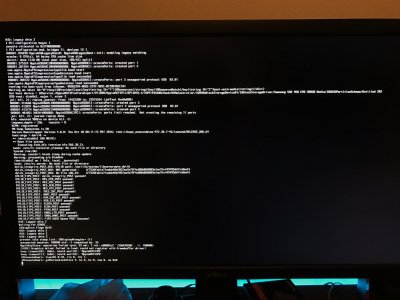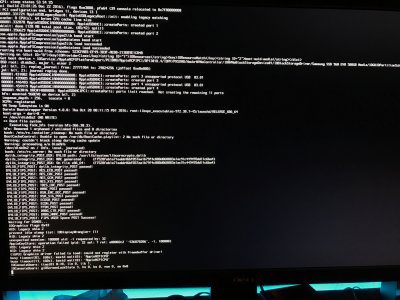- Joined
- Jan 27, 2017
- Messages
- 29
- Motherboard
- Gigabyte GA-Z170X-UD3
- CPU
- i7 6700k
- Graphics
- MSI Radeon RX 480 Gaming X 8G & Intel HD
Ok, so I've reinstalled Sierra on the NVMe drive.
Multibeast > Bootloaders > Clover UEFI mode
Mounted NVMe EFI via clover configurator
Pasted SSDT-NVMe-Pcc in the NVMe EFI/CLOVER/ACPI/patched
Opened nvme EFI config plist in clover configurator
ACPI > DSDT patches:
Comment: Change all _DSM to XDSM
Find: <5f44534d>
Replace: <5844534d>
Saved.
put the folder patch-nvme-master in downloads and ran these terminal commands:
cd ~/Downloads/patch-nvme-master
./patch_nvme.sh --spoof 10_12_3
Opened kext wizard
Instalation tab > Dragged the created HackrNVMeFamily-10_12_3.kext in there (s/l/e) and installed
Then on the first tab I clicked repair disk permissions.
Then with my 2 ssd's and the USB instal drive connected I rebooted.
Got to clover boot screen and chose nvme drive. It took a while but it booted!
Then I removed the usb stick, shut down. When I tried to boot again I can't get in the nvme drive anymore.
Disconnected the SATA drive aswel and tried to boot in the nvme.
Verbose is attached.
What am I doing wrong?
Multibeast > Bootloaders > Clover UEFI mode
Mounted NVMe EFI via clover configurator
Pasted SSDT-NVMe-Pcc in the NVMe EFI/CLOVER/ACPI/patched
Opened nvme EFI config plist in clover configurator
ACPI > DSDT patches:
Comment: Change all _DSM to XDSM
Find: <5f44534d>
Replace: <5844534d>
Saved.
put the folder patch-nvme-master in downloads and ran these terminal commands:
cd ~/Downloads/patch-nvme-master
./patch_nvme.sh --spoof 10_12_3
Opened kext wizard
Instalation tab > Dragged the created HackrNVMeFamily-10_12_3.kext in there (s/l/e) and installed
Then on the first tab I clicked repair disk permissions.
Then with my 2 ssd's and the USB instal drive connected I rebooted.
Got to clover boot screen and chose nvme drive. It took a while but it booted!
Then I removed the usb stick, shut down. When I tried to boot again I can't get in the nvme drive anymore.
Disconnected the SATA drive aswel and tried to boot in the nvme.
Verbose is attached.
What am I doing wrong?


